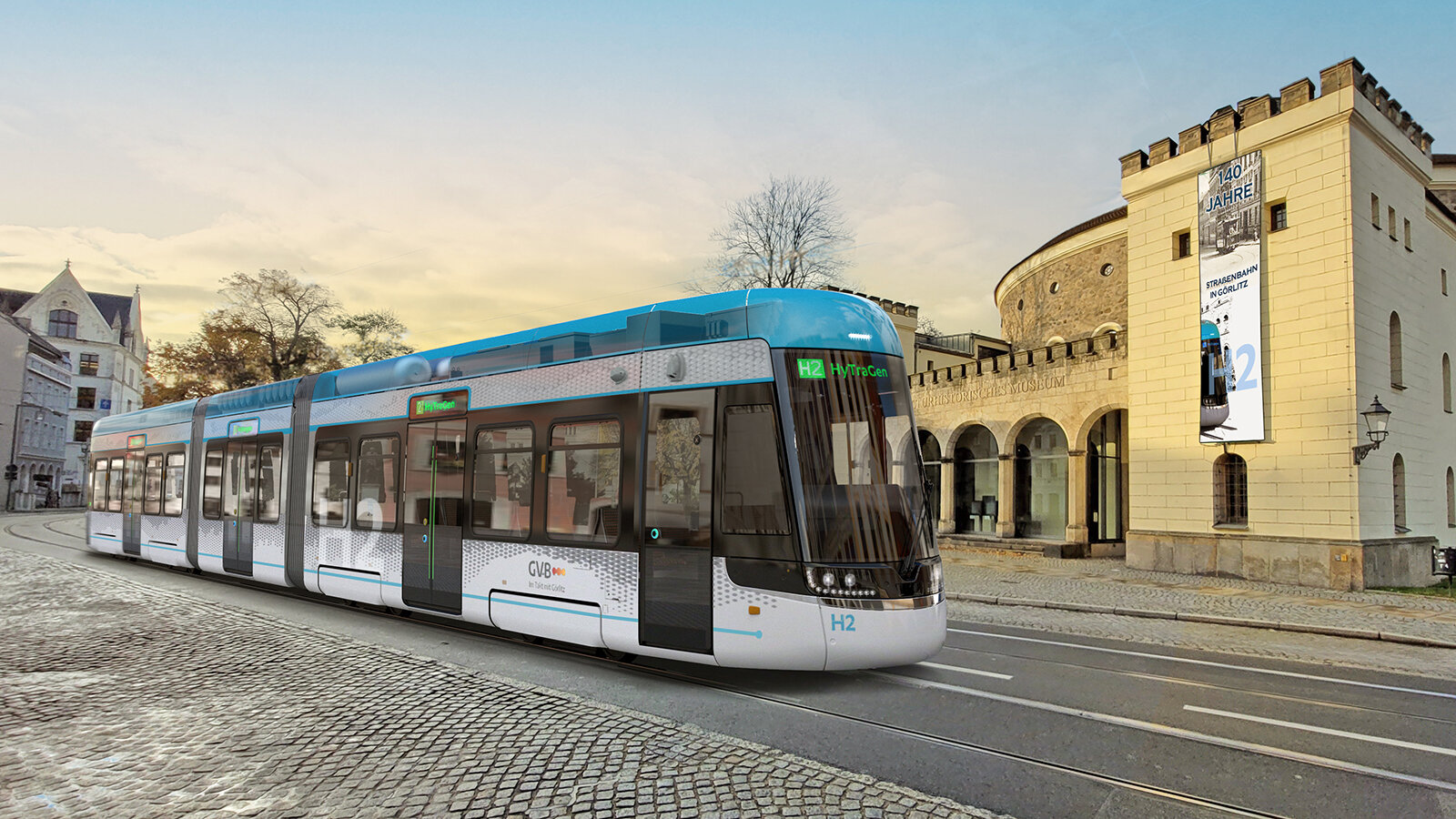Chemnitz University of Technology Is Involved in the Development of Europe’s First Hydrogen Tramway
Professorship of Advanced Powertrains develops refueling strategy and simulation models for the aging of the drivetrain, and measures the fuel cell system before integrating it into the tramway
-

This is what the prototype of the hydrogen tramway from Saxony will look like. Image: Hörmann Vehicle Engineering GmbH
The Professorship of Advanced Powertrains at Chemnitz University of Technology (TUC) is part of a Saxon consortium that aims to put Europe's first hydrogen-powered tramway on the rails in Görlitz at the end of 2026. Funding of around eight million euros has been pledged for this ambitious project, of which 1.2 million euros will go to TUC. The research project "HyTraGen" (Hydrogen-Tramway of the next Generation) has been launched under the leadership of Hörmann Vehicle Engineering GmbH in Chemnitz. The project partners for the prototype are tramway manufacturer Heiterblick GmbH from Leipzig and Flexiva Automation & Robotik GmbH from Amtsberg in the Erzgebirge. The tramway will be tested together with Görlitzer Verkehrsbetriebe (GVB).
"Hydrogen drives will be an integral part of new vehicle developments in the future," says Dr. Volkmar Vogel, Senior Vice President of Hörmann Vehicle Engineering GmbH. With a view to Asia, where H2 tramways are already in use, Hörmann developed the project idea for a catenary-free tramway with hydrogen and fuel cell drive back in 2019. The hydrogen tramway is not intended to be in direct competition with existing overhead lines, but rather an alternative for routes where overhead lines are not necessary or practical. New districts and suburban areas can thus be made accessible much more easily and with lower infrastructure costs.
"In the future, hydrogen will be able to show its advantages above all where large masses are transported over long distances, i.e. especially in heavy duty, freight and passenger transport," says Prof. Dr. Thomas von Unwerth, head of the Professorship of Advanced Powertrains at TUC. For him, the hydrogen tramway is therefore a sensible option, but its practicable use depends on many parameters, especially the availability of hydrogen filling stations. "In addition, H2 tramways must not be much heavier than conventional ones, so the additional weight of the hydrogen tanks must be," says von Unwerth.
"Over the next three years, the research team at the Professorship of Advanced Powertrains will focus in particular on developing a refueling strategy, developing simulation models for the aging of the powertrain and measuring the fuel cell system in the laboratory environment before integrating it into the tramway," explains project manager Erik Pohl, research associate at the Professorship of Advanced Powertrains.
The Saxon consortium intends to use the project results to pave the way for the construction of new, innovative rail vehicles in Saxony. Both vehicles and system components should generate new added value, as the project results should also be used for other types of rail vehicles such as tram-trains. This approach could also be of particular interest for the Chemnitz model in the future. This model is the variant of a light rail network used in the Chemnitz region to link tramways and railroads.
The "HyTraGen" project is funded by the Federal Ministry for Digital and Transport as part of the "National Innovation Program Hydrogen and Fuel Cell Technology Phase 2".
For more information, please contact Erik Pohl, tel. +49 (0)371 531-33346, email erik.pohl@mb.tu-chemnitz.de.
Overview of research projects at the Professorship of Advanced Powertrains: https://www.tu-chemnitz.de/projekt/alf/content.php?view=forschungsprojekte&lang=en
Mario Steinebach
15.03.2024




